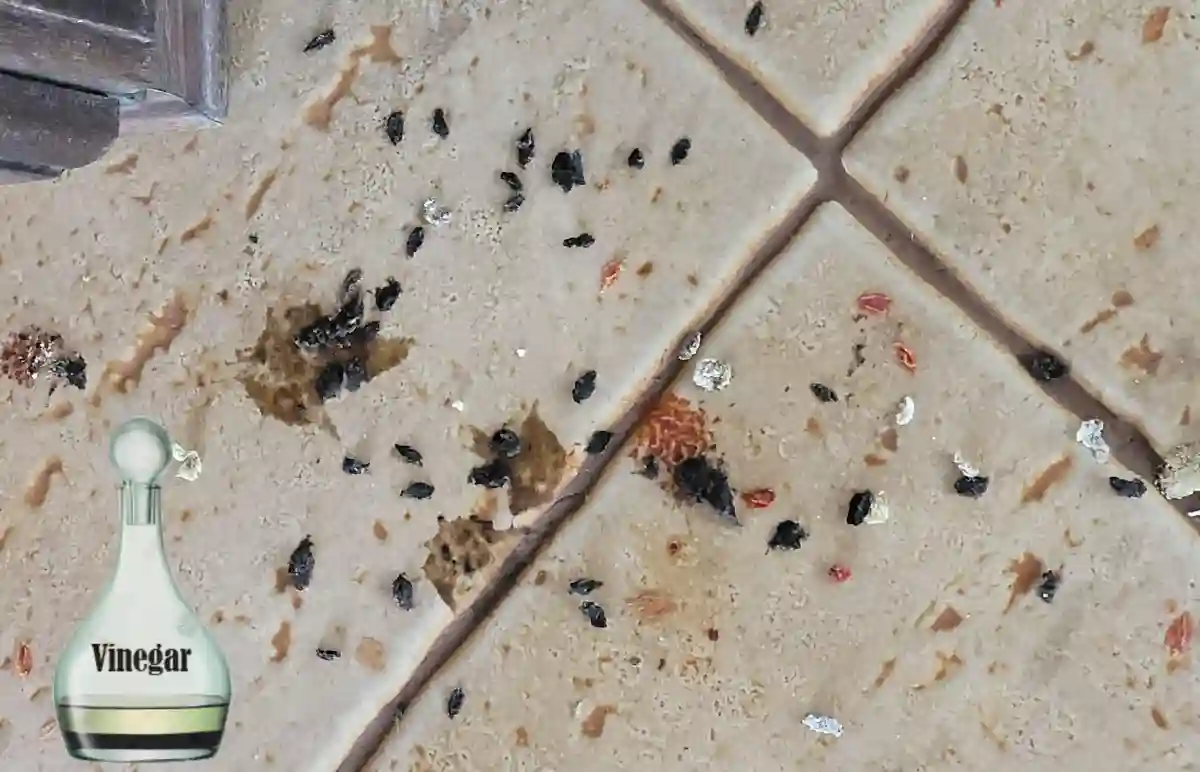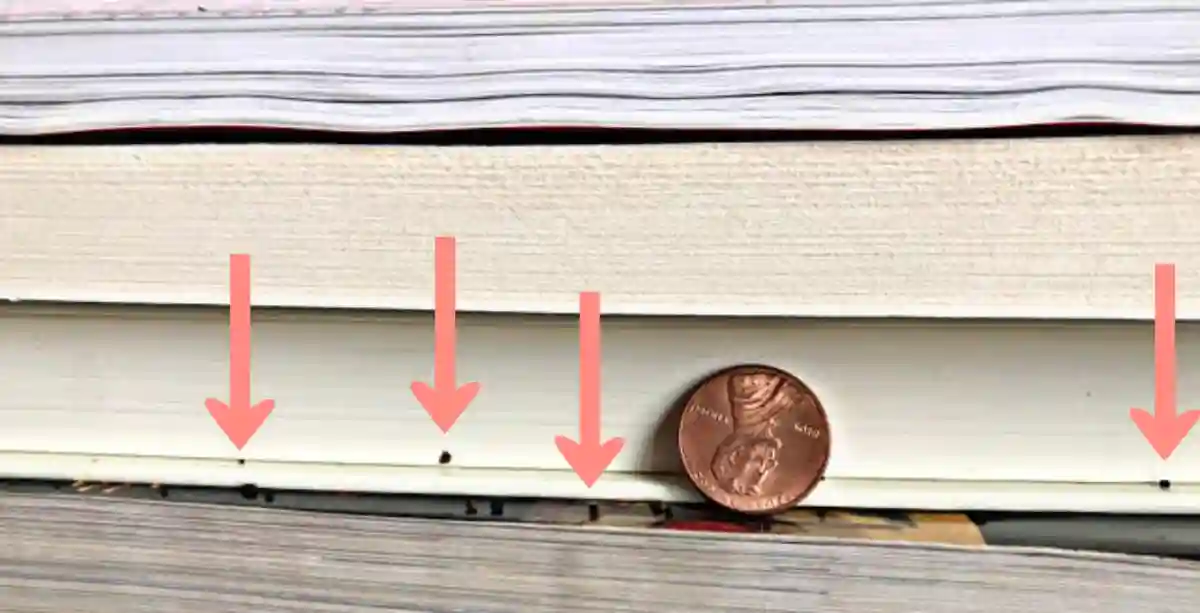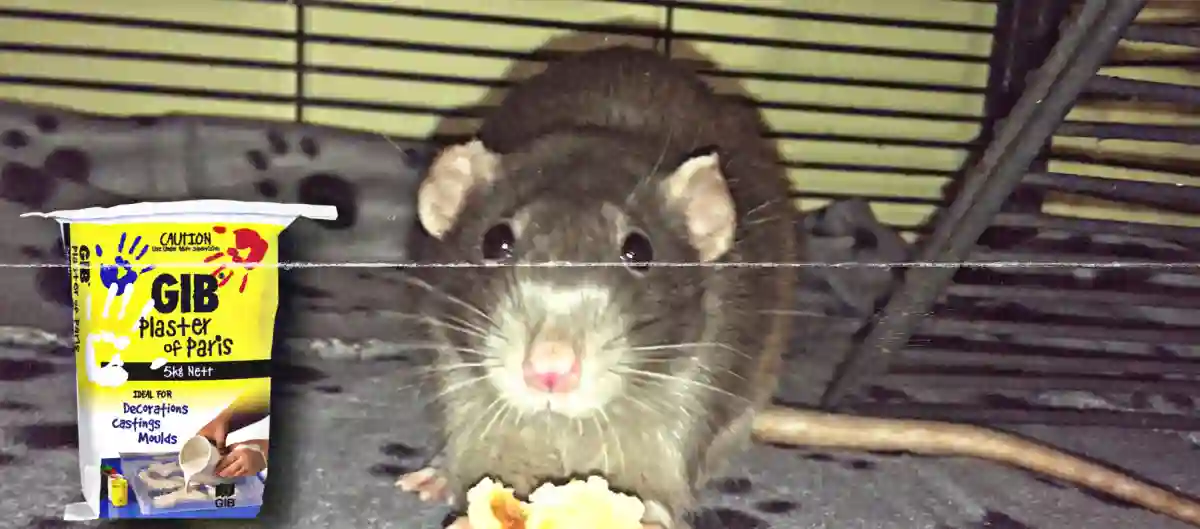If you see mice in or near your home or car, you want to make sure to clean up their pee, poop, bodies, and nests carefully. And as such, you need the best disinfectant for mouse droppings that works. Without disinfecting the droppings, you could be infected if accidentally exposed, either through inhaling the dust or accidentally touching the droppings or even nesting materials.
Best Disinfectant for Mouse Droppings

1. Disinfectant Cleaner
A general disinfectant cleaner can be used to wipe down items that have been in contact with mice droppings. However, be cautious with sensitive items like laptops and screens, as some cleaners can scratch them (if you need to clean them too). Power down electronics and remove batteries before cleaning, and avoid using anything on screens unless it’s recommended for that purpose.
You can get Windex Disinfectant Multisurface All-Purpose Cleaner.
So, this is a 1-gallon (128 fl oz.) refill bottle of Windex multi-surface cleaner, and easily the best disinfectant for mice droppings. It has a pleasant citrus scent and leaves a streak-free shine. So, we found it easy to wipe, leaving no residue behind. Also, you can clean various surfaces, including glass, chrome, plastic, vinyl, porcelain, ceramic tile, Plexiglas, Formica, and other hard surfaces that you may have found droppings.
This disinfectant will kill 99.9% of germs, so don’t bother about that after application.
2. Rubbing Alcohol
Rubbing alcohol is a simple and effective solution for disinfecting items with mouse droppings. It can be used on various surfaces, including electronics. If you can’t throw out the affected items, 99%-strength rubbing alcohol is recommended.
For your rubbing alcohol, you should get Swan 70% Rubbing Alcohol.

This particular rubbing alcohol is a first aid antiseptic for treating minor cuts and abrasions but can also work as a disinfectant for mouse droppings. It contains 70% isopropyl alcohol and also dissolves dirt after the surface wipe. We’ve noticed that it quickly evaporates after evaporation – you should not have to wait for too long before cleaning the affected area.
3. Quaternary Cleaner
A quaternary cleaner is a specialized disinfectant you can obtain from your local janitorial supply stores. It can kill possible hantavirus contained in the droppings and is safe to use around pets and on clothing. Buckeye’s Quat cleaner is one example (if you come across that). When using it, wet down surfaces, let it sit, and wipe dry. Avoid dusting or vacuuming first to prevent breathing in any dust that may contain the virus.
4. Vinegar + Water Solution
A simple solution of vinegar and water can be the best disinfectant for mouse droppings that you need. It is a solution you may already have at home, or ask your friendly neighbor for some measurements to apply on the affected area.
Used it to wipe down any items that may have come in contact with mouse droppings. Air dry the items, and the smell will disappear once dry. This method is a natural and non-toxic way to disinfect surfaces.
If you don’t have one around, you should get the Happy Belly White Distilled Vinegar.
This Happy Belly Distilled white vinegar comes in a 16-fluid ounce bottle and contains 5% acidity, making it suitable for disinfection of mouse droppings. Apart from applying it around your house for cleaning purposes, you can also use it for cooking different recipes.
5. Lysol
You have probably heard of Lysol, it’s a well-known brand of disinfectant that you can use to clean various surfaces, including those contaminated with mouse droppings. It’s available in different forms, such as sprays and wipes, making it convenient for different applications.
If you are getting this brand of disinfectant, go for Lysol Multi-Surface Cleaner which can sanitize and disinfect quickly.
Lysol Multi-Surface Cleaner easily gets rid of viruses and bacteria. It’s a powerful disinfecting pour that wipes out 99.9% of germs. This cleaner is suitable for hard, non-porous surfaces, and safe for your home, including the kitchen and bathroom. Not only does it eliminate odor-causing bacteria, but it also leaves behind a fresh lemon breeze after use, adding a pleasant fragrance to the cleaned spaces.
When dealing with mouse droppings, you want to follow the instructions on the Lysol product to ensure proper disinfection. Lysol’s active ingredients are designed to kill a wide range of bacteria and viruses, making it a suitable choice for this purpose.
It’s essential to choose the right disinfectant for the job. Using the wrong chemical can destroy surfaces or leave harmful germs behind. Pinesol or Dettol, while great for some purposes, may not work on things that mice may carry. Also, pine oil can be poisonous to cats and dogs. Selecting the appropriate disinfectant ensures effective cleaning without unnecessary risks.
How to Clean Books with Mouse Droppings

Follow the steps outlined in this guide to clean books with mouse droppings:
1. Gather your cleaning materials
First, find a cleaner and well-ventilated area in the bookstore to work in. You’ll need a disposable tablecloth or a plastic sheet for surface protection. Wear gloves gloves and a mask to protect yourself from touching or inhaling potential contaminants and allergens possibly present in the mouse droppings.
Meanwhile, CDC recommends wearing “either a half-mask air-purifying (or negative-pressure) respirator or a powered air-purifying respirator (PAPR) with N-100 filters”.
You will need cleaning supplies including:
- soft brush
- vacuum cleaner with a brush attachment
- paper towels
- mild disinfectant spray and
- garbage bag
2. Begin the preliminary cleaning
You need to ventilate the books by taking them outdoors or to another room. If the book pages are exposed to the droppings, flick them to remove loose droppings. Take care not to damage the pages or spine.
You’ll need to prepare a cleaning solution by mixing one part bleach with five parts water in a small dish or bucket.
3. Clean the books
Use a soft brush like a clean paintbrush and gently brush the pages to clean books with mouse droppings. Try to brush in the direction of the book’s spine carefully.
If there are visible stains, you need to dampen a paper towel with a mild disinfectant spray. You can also use a soft cloth and dampen it with the diluted bleach solution, making sure that the cloth is only slightly damp by squeezing out any excess liquid.
While keeping the book closed, gently wipe the edges of the pages. By holding the book closed you’ll have a stable surface for wiping. The bleach solution will help eliminate germs and bacteria, but it may not completely remove stains caused by droppings. Don’t use vinegar as a disinfectant; it’s not effective.
Again, make sure that the pages of the book do not become excessively wet as it can cause additional issues.
4. Air dry the books after cleaning
Allow the books to thoroughly air dry before placing them back into storage.
Be sure to place them on surfaces that won’t transfer any contaminants or moisture back onto the books.
Exposure to UV from sunlight can be a good disinfectant, killing viruses and bacteria. However, if you are worried about fading and damage to the pages, don’t expose the books to direct sunlight.
Keeping Mice Out of Your Book Storage
Mice droppings can leave permanent stains on books and papers. Since these stains may be difficult to remove, you have to take measures to prevent mice from further infesting your books and papers.
1. Set mouse traps
If you are uncertain whether you have a mice issue, you can set traps near the suspected area. Regularly check the trap every few days to determine if any mouse has been captured. Based on the results, take appropriate measures to address the situation accordingly. If you have pets around, here is the best mouse trap to use.
2. Store books in sealed bookshelves
After you clean books with mouse droppings, prevent further infestations by storing the books in sealed containers or bookshelves. That shouldn’t stop you from regularly inspecting your bookshelves and surrounding areas for signs of mice or droppings.
3. Trim nearby vegetation
Is your book storage area near outdoor spaces, trees, shrubs, and vegetation? Have them well-trimmed and maintained because overgrown vegetation provides hiding spots for mice.
4. Deter mice presence
Deterrents can stop mice entry in the first place. You can use natural deterrents to keep mice from your bookshelves.
Mice dislike strong scents from peppermint oil, eucalyptus oil, or cloves. Use this deterrent by soaking cotton balls in these essential oils and placing them near your bookshelves or areas of mice activity.
Mothballs or sachets of strong-smelling herbs like rosemary or lavender are known to keep mice from bookshelves.
5. Mouse-proof your library
Inspect the areas around your bookshelves for tiny holes and seal them. Mice can enter a small, 6-7 mm hole (about the diameter of a normal-sized pen), so be sure to seal these. You should find gaps or cracks in walls, windows, doors, and floors. Caulk them with sealants after you clean books with mouse droppings.
How to Clean Mouse Droppings Safely
1. Get Ready to Clean Up After Mouse
You have to be careful while cleaning to avoid getting sick. Before you start, make sure you have all the right tools ready.
a. Prepare a disinfectant
Now, pick your disinfectant (as we suggested the best disinfectant for mouse droppings up there). Your disinfectant can be:
- Regular disinfectant cleaner with “Disinfectant” on the label. Or
- Mix 1.5 cups of household bleach with 1 gallon of water (or 1 part bleach to 9 parts water). Make a new bleach solution each time you use it.
b. Put on rubber or plastic gloves and a nose mask
Wear your mask and gloves, which could be rubber or latex.¹ You can get sick from mice droppings if you breathe in contaminated air. The CDC says it’s not a good idea to vacuum or sweep mice droppings, including pee, poop, or nests, even if you have a special vacuum filter. Doing that can put tiny droplets of viruses in the air. If you have already vacuumed, open the doors and windows for 30 minutes and take the vacuum outside.
2. Clean Up Mice Droppings
Follow these simple steps:
- Wear rubber or plastic gloves.
- Spray pee and poop with bleach or special disinfectant until wet.
- Leave the area for 5 or up to 30 minutes or as the label of your disinfectant recommends.²
- Use paper towels to clean up the pee, poop, and cleaning stuff.
- Put the paper towels in a covered trash can that gets emptied often.
- Use a mop or sponge to clean the spot with disinfectant.
- Before taking off gloves, wash them with soap and water or disinfectant.
- After you take off the gloves, wash your hands with soap and warm water.
Make sure you clean all the hard stuff like floors, counters, cabinets, and drawers. If there’s no soap or your hands aren’t dirty, you can use alcohol-based hand rub.
For surfaces:
| Clothes, bedding, stuffed animals | Wash items like sheets, clothes, or stuffed animals that might have germs with hot water and soap. Put them in the dryer on high heat or let them dry in the sun. |
| Carpets and upholstery | Use special cleaning liquid or steam cleaner to clean rugs and soft furniture like couches and chairs. |
| Books, papers, non-washable items | Put books, papers, and things you can’t clean with liquid outside in the sun for a few hours or in a mouse-free place inside for at least three weeks (six weeks is even better). |
3. Get Rid of Any Dead Mouse or Nest
Fleas are often found on mice, therefore, you want to protect yourself from flea bites and diseases they may carry. Use bug spray like DEET on your clothes, shoes, and hands when you handle dead mice or clean their nests.
- Put on gloves made of rubber or plastic.
- Spray the area where the dead mouse is, along with its nest and the nearby space, using a disinfectant. Leave it there for 5 minutes, or follow the instructions on the disinfectant label.
- If you’re not going to use the trap again, put the dead mouse, nest, and any used traps in a plastic bag.
- Close the first bag by tying a knot at the ends. Then, put that bag into another bag and seal it by tying a knot as well.
- Put the bag in a garbage can with a lid that gets emptied often. If you’re not sure, you can also ask your state health department for advice on how to dispose of dead mice.
- Wash your gloved hands with soap and water or disinfectant before taking off the gloves.
- After you take off your gloves, wash your hands with soap and warm water. If you don’t have soap and your hands don’t look dirty, you can use alcohol-based hand sanitizer.
How to Remove Mouse Droppings from Cabins, Sheds, and Barns
If you found mouse droppings in your home in areas like the cabin, shed, or barn, follow this procedure to safely clean up:
1. Get ready
Before you start cleaning, open all doors and windows for half an hour to let fresh air in. Make sure to leave the space while doing this. Go back to the space and search for signs of mouse droppings. Wear gloves made of rubber or plastic.
2. Clean Up
Clean up any mice pee, poop, nests, or dead mice. For hard floors, use a mop. If it’s a dirt floor in a shed or outbuilding, spray disinfectant on it. If insulation with pee and poop on it is showing, put it in plastic bags to take it away.
Clean things like counters, cabinets, and drawers with disinfectant. You also need to clean and use the best disinfectant for mouse droppings on other surfaces.
3. Take Necessary Items Outside
- Take boxes and containers that might have yucky stuff in them outside to a sunny spot where the air can flow well.
- Take out things that might be dirty while you’re outside.
- Stay where the wind is blowing away from your face so you don’t get any dust or junk in it. Throw away things you don’t need anymore.
- Make sure to clean and disinfect things that aren’t porous using bleach or disinfectant, following the instructions. If you’re dealing with cloth or paper, follow the advice given.
- If cardboard boxes have urine or droppings on them, throw them away. For plastic, glass, or metal containers, you can disinfect them with bleach or disinfectant.
Before you take off your gloves, clean them with soap and water or disinfectant. After you take off the gloves, wash your hands with soap and warm water. If you don’t have soap and your hands aren’t dirty, you can use alcohol-based hand rub.
How to Clean Droppings from Heating and Cooling Ventilation Systems (Air Ducts)
If you see signs that mice in your heating and cooling system, consider calling your local pest control providers to get rid of them.
1. Inspect Your Vehicle
Sometimes mice make homes in cars, trucks, campers, and other vehicles, especially if they are not used often.³ When your vehicle is in a place with good airflow, check for signs of mice, like waste, nests, or dead ones. Then, clean and disinfect the vehicle.
Open the front part, the doors, and the back of the car so that the inside and the engine area can get fresh air for 20 minutes.
If you’re starting a car that hasn’t been used for a while, do this and also check the air openings and filters before turning on the engine. Look inside the car. Before you check the engine, take off the cables from the battery to stay safe from shocks. Remember to wear plastic gloves and a long-sleeved shirt.
2. Apply Disinfectant
Look for mouse droppings left behind such as pee or poop. Get disinfectant to clean and make things germ-free. Don’t use a vacuum or strong sprayer on mouse pee, poop, or dirty places until you’ve cleaned them.
Spray the affected area of the car with disinfectant until they are wet, and wait for 5 minutes or as the label recommends. Use a paper towel to pick up the stuff and throw it in the trash. If you find nest stuff in the air system, take out the nest stuff and the air filter, and put them in the trash. Put in a new filter and close it up.
Once you’ve taken away the mouse stuff, clean the rest with more germ-killing spray. Put the battery back when everything is dry. After you take off the gloves, clean your hands with soap and water or germ-killing stuff. Then wash your hands with soap and warm water.
Conclusion
When there are lots of mice, you need to be extra careful when cleaning homes with the best disinfectant for mouse droppings. This is also important for empty houses that have had many mice, and for places where diseases carried by mice have been found.
If you can’t handle the task, have pest professionals clean up. You can also talk to your local health department, state health department, the safety authority, or CDC to know how to stay safe from mouse-related diseases.
- Rodent Control and Protection from Hantavirus. New Mexico State University
- Here’s how to identify mouse poop and dispose of it safely. TomCat
- Is There a Mouse Living in My Car? Erie Insurance








